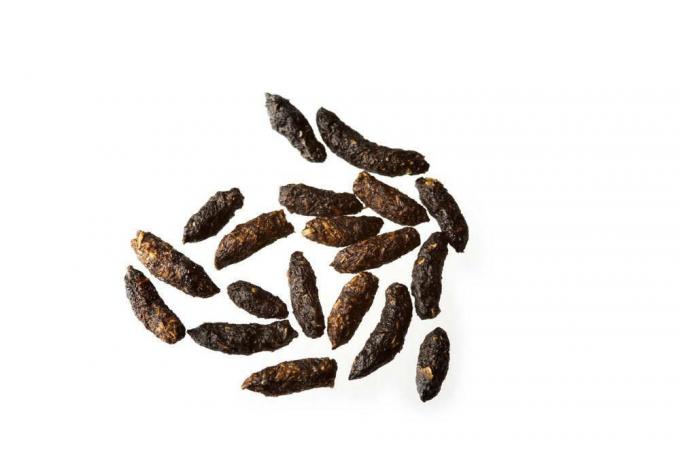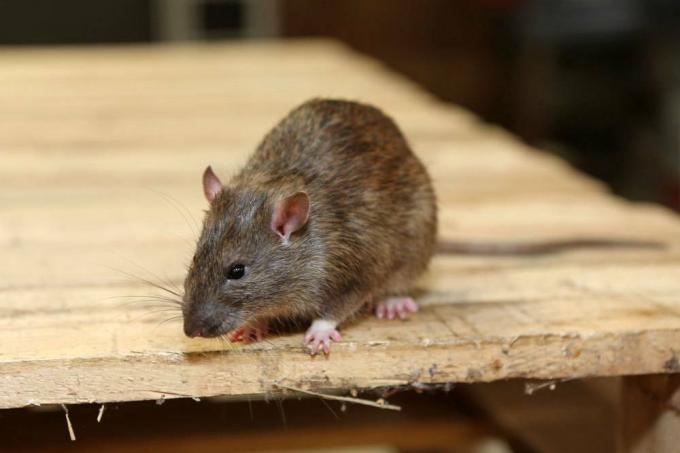
table of contents
- Recognize mouse droppings
- Size distribution reveals infestation pressure
- Consistency reveals topicality
- Detecting mouse droppings
- Note potential danger
Mouse droppings are symptomatic of a serious pest problem in the home. Important identifying features of the excrement leave no doubt, such as size, shape and color. This is how you determine Feces of mice by their appearance.
Recognize mouse droppings
At an early stage, excrement is the only thing you'll see from mice around the house. The rodents are nocturnal, very shy and masters of camouflage. Even with massive mouse infestation, direct encounters with living animals are the exception. A good reason to give your house a thorough inspection the first time you suspect the presence of the pests. Mouse droppings can be recognized by this appearance:

- Size: 3-8mm
- Shape: round or spindle-shaped
- Color: black to dark brown
At first glance, the visual appearance is reminiscent of a dark grain of rice. Typically, the beasts drop their feces sporadically and do not create latrines, as rats often do. A flat, arbitrary distribution is therefore a further indication of the loosening of mice.
Size distribution reveals infestation pressure
Each house mouse produces 60 to 80 fecal pills per night. If the dark lumps are about the same size, it is mostly a single specimen. On the other hand, if you find hundreds of grains of droppings of varying sizes, there is cause for concern. Young animals naturally leave behind a smaller solution than adult parent animals. A fanned out size spectrum indicates that the mice have started to reproduce and the pressure of infestation is increasing. This aspect is a significant reason for immediate consultation with a certified pest controller.
Note: It cannot be determined from the appearance of mouse droppings whether the culprit was male or female. If it was a pregnant female mouse, the plague is inevitable. Experts have determined that a single litter and subsequent generations can produce up to 2000 mice within a year.

Consistency reveals topicality
The consistency of mouse droppings provides information about the explosiveness of the infestation. You can tell from these criteria whether you are dealing with an acute mouse plague or whether the furry gang has long since left.
- Acute mouse infestation: wet, soft fecal pills with a shiny surface
- Old, ended infestation: dried, crumbly or hard excrement
Another indication of the age is the color of the solution. The older the manure, the more the black to dark brown color fades and takes on a grayish appearance.
Detecting mouse droppings
Mice can be up to mischief for a long time because the tiny crumbs of excrement are mistaken for harmless bundles of fluff. You should therefore use the first suspicions as an opportunity to carefully inspect your house, basement and garage. The sooner you identify mouse feces as such, the better the chances of a quick and effective control success. We have summarized the most common locations for you below:
- House: behind pieces of furniture, in cable ducts, in cupboards and drawers, on storage shelves
- Basement: in and behind bags or boxes, along dark walls
- Garage: behind recycling bags, parked car tires or stored potting soil
Examine any potential loopholes that cunning mice can use to gain entry. All openings into which a ballpoint pen would fit come into consideration.

Note: The smell left behind by mice cannot be determined at the beginning. Occasional fecal pills are almost odorless. If the mouse population takes on the dimensions of a plague, large accumulations of feces and urine spread an acrid, stinging stench in the house.
Note potential danger
If you only find dried excrement from mice, this fact only gives the all-clear on the surface. In fact, the dehydrated excrement poses a serious health risk. When the fecal pills crumble, tiny particles are blown into the room air and are breathable. This can have disastrous consequences because the fecal particles often carry pathogens in their luggage. Treacherous infections such as cholera, dysentery and life-threatening hantaviruses spread through inhaled faecal particles. At the first suspicion, please put on disposable gloves and a respirator mask to avoid direct contact with the dangerous rodent droppings.
